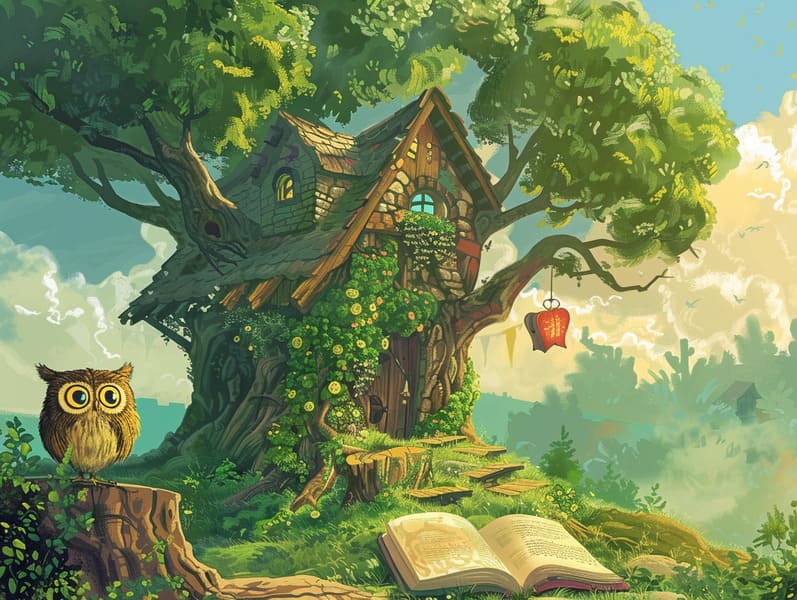
Short fairy tales have long histories. These tales have been passed down from one generation to the next ages before they were ever documented. They arose from a variety of backgrounds, including Asian traditions. They were initially transmitted among older generations, often carrying themes and messages reflective of the societal norms and beliefs of the time.
The famous Grimm duo, Jacob and Wilhelm, were among the first to compile and publish many of these beloved tales. Their volume, "Grimm's Fairy Stories," included narratives like "Cinder Maid," "Little Brother and Little Sister," and "Schneewittchen," which have since become pillars in the world of children's fairy tales. Similarly, the Danish author's magical tales, such as "The Story of the Little Mermaid," and "The Duckling's Story," have floated into hearts worldwide, securing their place in the pantheon of famous fairy tales.
Even though they are old, these stories remain as meaningful as ever, especially as bedtime stories for kids. These magical stories are now available in diverse formats, including artistically illustrated books, whimsical animations, and free fairy tales online.
Their lasting presence can be attributed to several whimsical characteristics:
Moral Lessons: Timeless fairy tales often whisper important moral lessons. Narratives like "The Shepherd Boy and the Wolf" teach the merit of truth, while "The Tale of the Tortoise and the Hare" exemplify the traits of persistence and modesty. These tales offer little ones clear distinctions between right and wrong, forming their moral compass in a tender yet deep way.
Empathy and Awareness: Timeless fairy tales frequently illustrate heroines facing struggles and tests, provoking young readers to empathize with their struggles and rally behind their triumphs. For instance, "Beauty's Beast" illustrates the benefit of appreciating inner worth to know the real character of a being, enhancing insight and knowledge.
Cultural Comprehension: Many traditional fairy tales are rooted in the cultural contexts from which they arose. Reading these narratives can provide fascinating glimpses into different beliefs, promoting a sense of global understanding and respect.
Imagination and Creativity: The fantastical elements in old fairy tales—enchanted lands—promote children’s creative minds. These tales carry readers to extraordinary realms, provoking inventive ideas and a sense of excitement that remains a lifetime.
Classic fairy tales are not only alluring but also informative. They provide fascinating tools in advancing various cognitive and emotional skills in little ones. When old fairy tales are narrated, they boost language development by presenting new terms and elaborate sentence structures. This practice also advances listening abilities and mental focus, as young readers keep up with the story, excited to see what happens next.
Furthermore, discussing the themes and characters of classic fairy tales can develop reasoning skills and critical thinking. Young readers learn to discern patterns, foresee events, and comprehend cause and effect. These talks also aid little ones express their thoughts and feelings, strengthening their emotional intelligence.
In today’s electronic age, the existence of online fairy tales has made these narratives more reachable than ever. Web platforms and software extend large libraries of Grimm's fairy tales that can be read or listened through anytime, anywhere. Fairy tales read aloud are particularly widespread, offering an engaging way for young ones to take part in these spellbinding stories. Read-aloud stories and narrated videos lead characters and settings to life, often accompanied by bewitching sound effects and harmonies that heighten the narrative adventure.
The everlasting appeal of classic fairy tales lies in their ability short fairy tales for kids to modify to today's society while continuing with their fundamental ideas. Contemporary versions of these stories often highlight more inclusive characters and modern settings, making them meaningful to today’s audience. However, the fundamental themes of gallantry, generosity, and fair-mindedness remain unchanged, continuing to impact children of all ages.
Timeless fairy tales also offer a sense of reassurance and knowability. They present to a orderly narrative with a distinct beginning, middle, and end, often concluding with the termination of conflicts and the triumph of morality over wickedness. This predictability can be consoling for kids, introducing a sense of constancy in an shifting world.
Classic fairy tales continue to bewitch and educate new generations, maintaining their attraction and importance in modern society. As children's night stories, they give a perfect blend of wonder and wisdom, backing moral values, empathy, and creativity. The existence of digital storybooks and the widespread nature of fairy tales read aloud ratify that these traditional fairy tales remain acquirable to new generations.
By perpetuating and making known these fairy tales, we continue to cherish the rich tapestry of cultural legacy and cultural heritage. Whether you are seeing a colorful picture book, accessing a internet library, or listening to an audio story, the attraction of traditional fairy tales is always within reach. These fairy tales reveal of the endless essence of stories and its ability to gather us across eras and regions.
Be it you are browsing a beautifully illustrated book, exploring a digital collection, or listening to an narrated book, the allure of traditional fairy tales is always within reach.
These tales convey of the everlasting strength of narratives and its ability to hold us together across eras and regions, forging a link that enchants and educates alike.